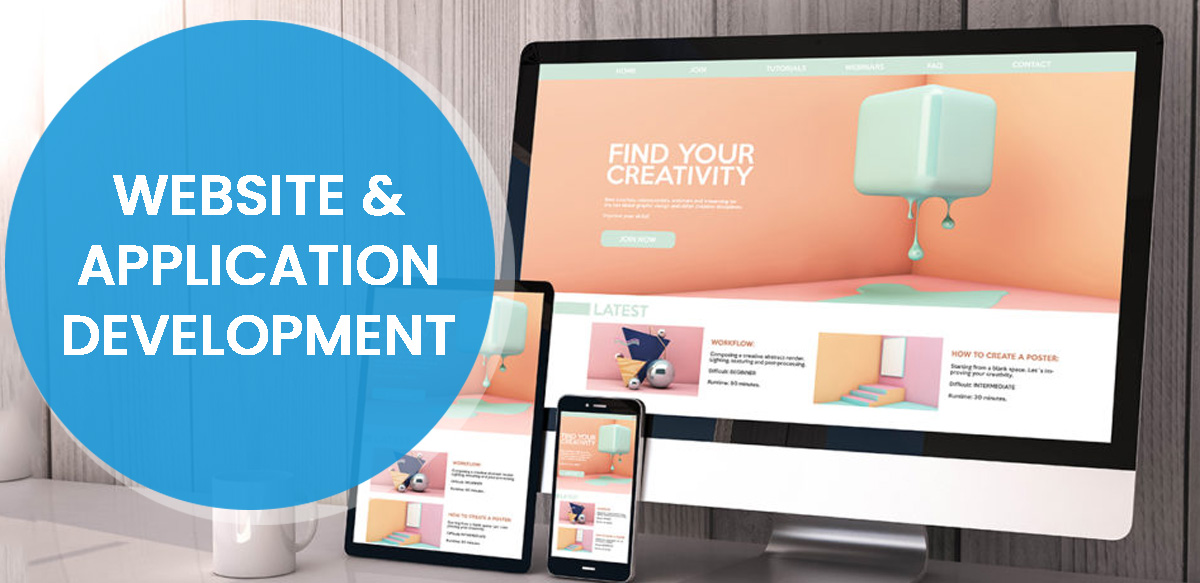
Jan 12, 2021 | By Crayo Tech
Mobile app development life cycle and the objectives
COVID-19 is forcing everyone online, consumers as well as businesses. So you can expect a huge crowd on the digital landscape.
With 48.62% of web traffic coming through mobile phones, you know this is a place you need to claim.
Apps are the future
Consumers prefer apps over mobile sites because of user experience, speed, special personalized offers, and additional features.
But consumers aren’t going to use just any app. They desire perfection and ease. When push comes to shove, your mobile app needs to stand up for your brand, even if there are already more than 5.5 million apps available in leading app stores.
Why should you focus on app development?
1. Greater opportunities for brand interaction
Recent research shows that 90% of a consumer’s mobile time is spent on apps, compared with 10% for browsing on the internet. As an entrepreneur, apps can significantly benefit your business. In the ecommerce space, an average mobile app user spends about 201.8 minutes per month shopping. That’s a considerable amount of time to interact, connect, and attract a potential customer to your brand. That’s why 42% of small businesses already have a mobile app, Clutch’s 2017 Survey stated.
As an extension of your brand, your app can bring more exposure to your brand while aligning with current consumer expectations. Moreover, a considerable segment of your target audience is using mobile apps for shopping.
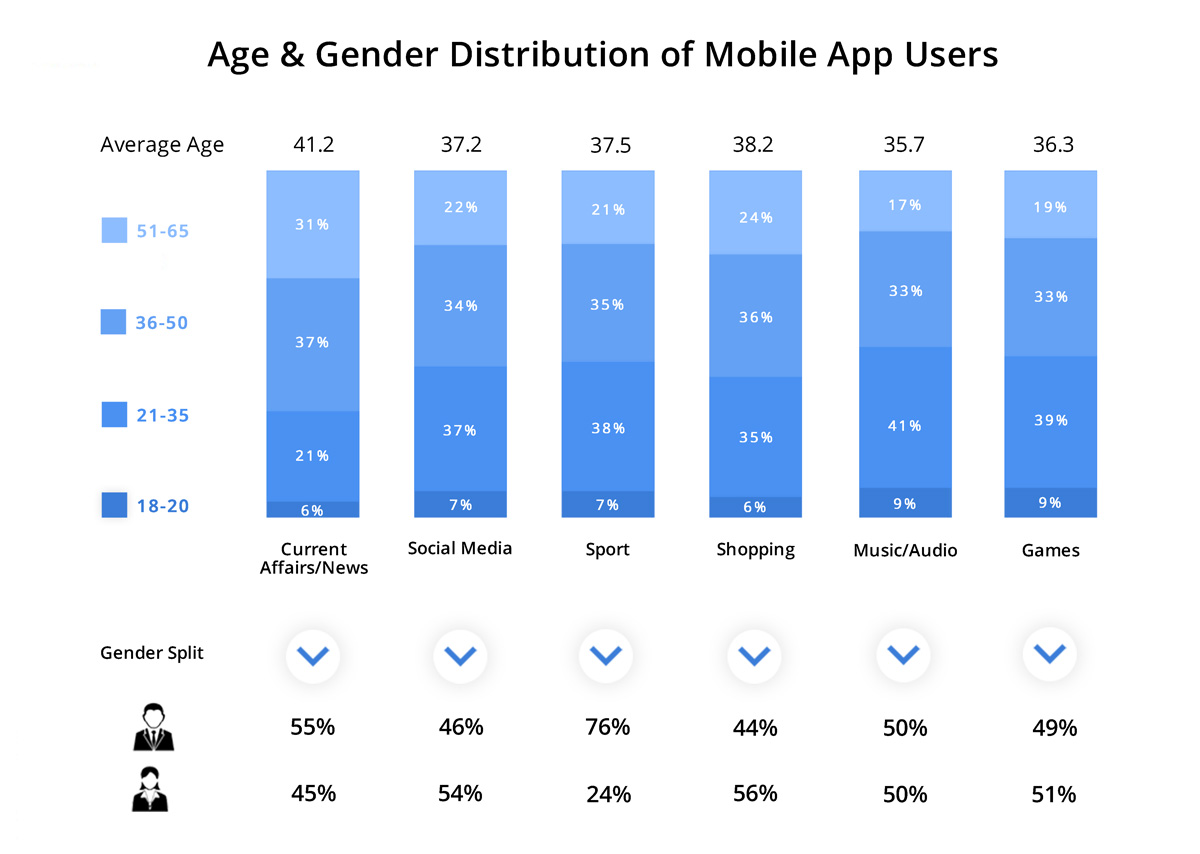
2. Higher conversion rates
According to research by Criteo, mobile apps improve conversions. Since consumers use apps longer, they view 4.2x more products per session than mobile sites. More interestingly, apps drive potential customers further down the sales funnel, showing higher conversion rates compared to both mobile and desktop sites.
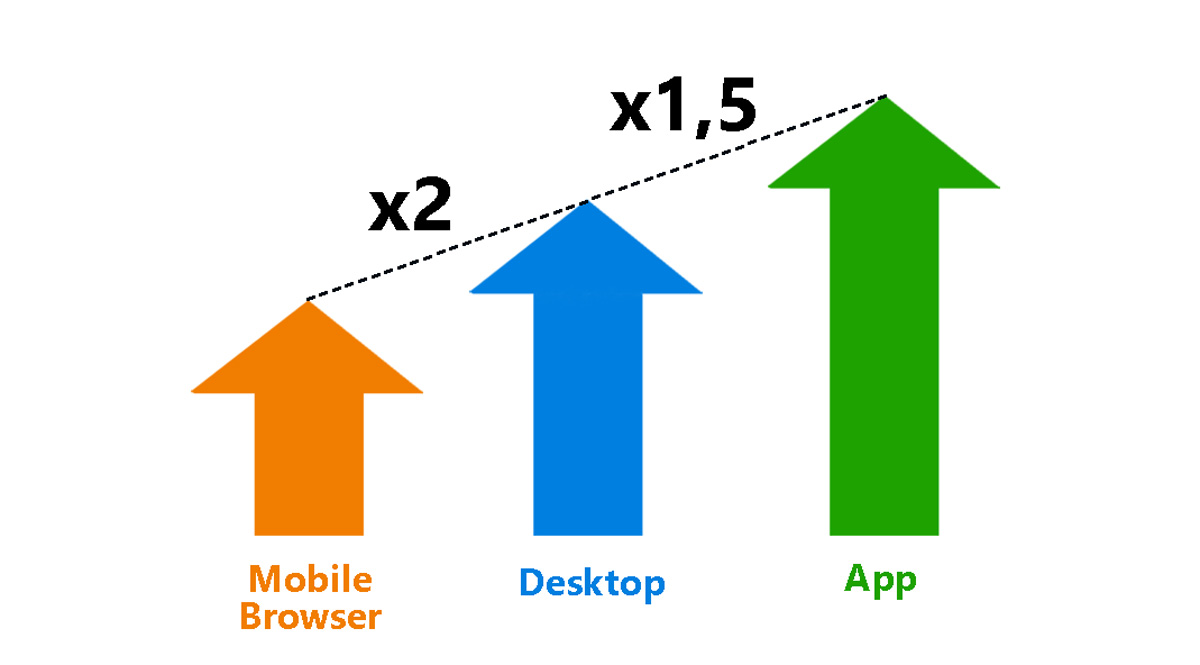
3. Improved customer retention
Apps have features and advantages that even mobile-optimized websites don’t. They can help:
- Engage better with your customers through push notifications.
- Increase brand awareness and visibility due to ever-present icons on their phones.
- Enhance interactions by simplifying processes (enabling one-click checkouts), minimizing load times, personalizing user experience by storing consumer data, etc.
40.4% of app users typically buy more goods after downloading the app. Better yet, nearly 46% visit a physical store more often, showing just how useful apps can be.
Everything to know about mobile app development
If you want to make a memorable impact on your customers and improve customer experience, you need to ensure that your mobile app is flawless in every way. And that means it should be beautifully designed, offer value to consumers, provide frictionless navigation, and be easy to use.
With these criteria, it seems that your objectives are well-defined. However, the app development arena is a demanding one that comes with its own set of unique challenges. You’ll need to consider compatibility, performance, functionality, and much more while designing and developing your mobile app.
That is why companies consider hiring a competent app development agency. But even if you decide on doing the same, it’s imperative that you have enough knowledge about all the stages of app development. It will help you make informed decisions during various steps involved in its lifecycle.
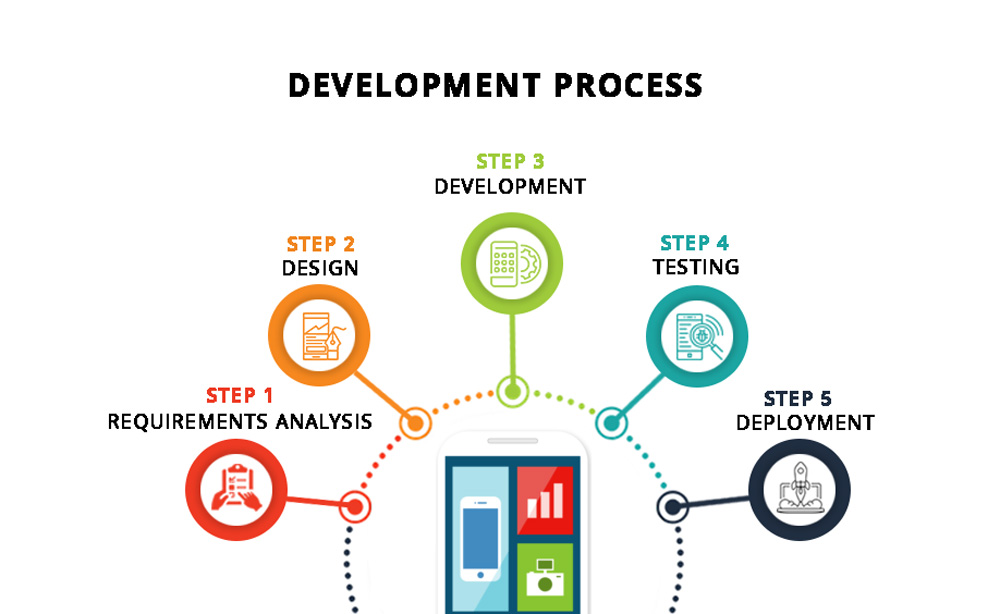
Step 1: Research and planning
Like all aspects of your business, you cannot get far in app dev without proper research and planning. You cannot launch an app without understanding the need for one. What do your customers expect from the app?
So look closely at what your competitors are offering and gather a detailed analysis of their shortcomings. In that case, you can use this opportunity to fill these gaps and gain a competitive advantage.
To ensure your app dev plans stay on target, keep the following objectives in mind:
- The target audience
- What value will the app bring to users
- The reason you are developing an app
- Your budget
- The time frame for designing to launch
- The platform on which the app is being developed
- Will it be free or paid
- Will it integrate or extend an existing infrastructure
Step 2: Design
Once you have a clear idea about your app, what features do you want it to have? How do you imagine it will look? These are important questions that you need to ask in order to begin designing and developing your app.
Create diagrams and documentation to provide a complete functional and technical overview. Detailed sketches can bring your ideas to life. As a powerful communication and collaboration tool, they can help various team members comprehend the envisioned product. Design layouts will include aspects such as:
- Page elements
- Visual branding elements
- Object categories
- Space distribution
- Available functions
- Possible actions
- Relationships between screens
Designers and developers will create one or more of the following to organize the app dev process:
- Wireframes- sketches of the different pages of the mobile app. The focus is on the structure and layout of a single page.
- Storyboards or Mockups- enhanced forms of wireframes where color, fonts, interactive elements, navigation, etc., are used in the sketch. There is a visual depiction of scenes and actions in sequential order.
- Wireflow- a representation of screen flows in order of actions involved in user workflows and interactions.
These developmental stages will help refine ideas and the arrangement of design components appropriately. They help portray the step-by-step navigation of a user through the app. More importantly, it will help overcome any initial technical limitations with the backend structure.
One of the priorities will be ensuring features and content appears correctly on iOS and Android phones. The design of your mobile app depends upon the platform you intend to launch it on. For instance, Android places the tab bar at the top of the screen, while iOS positions it at the bottom.
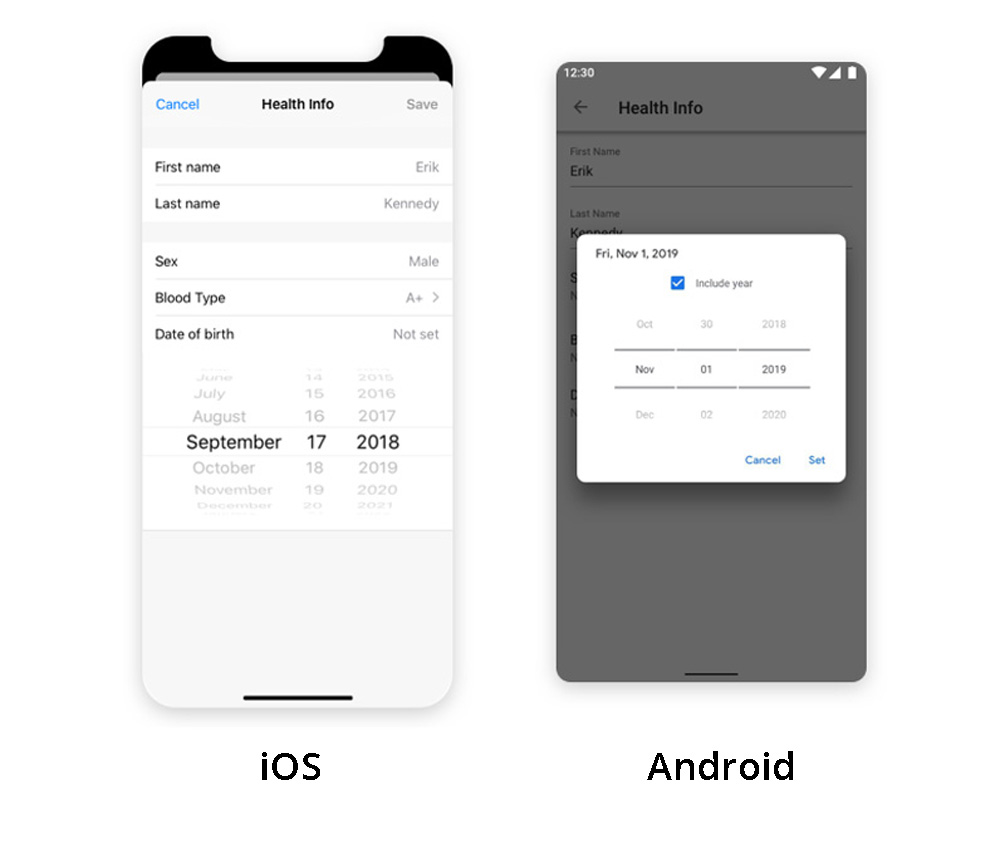
Step 3. Develop a prototype
Once app design concepts are finalized, now it’s time to put the pieces of the puzzle together. You need to ensure that all design elements are spot on. Poor functionality and appearance are a few of the reasons why apps get deleted.
That is why you need to create a prototype, a semi-functional page that provides a realistic representation of how a page will look and perform in the app—developing an interactive MVP before the final product saves time, money, and effort. Evaluating design concepts now makes sure there are no hiccups later. Elements like colors, text, fonts, logos, graphics, images, etc., must work cohesively to improve UI and UX.
The app development team needs to access workloads and capabilities. This will help decide which tasks will be completed in-house and which ones will be outsourced.
Step 4: Testing
Testing allows you to check and validate the functionality and assumptions of your prototype. But remember that the initial prototype may only have the core features of your app. It is designed to get your idea off the ground.
With the help of feedback, shortcomings, and mistakes can be highlighted. Modifications can be made quickly before a significant amount of coding has been completed. Moreover, it will help refine the initial product to create a high fidelity prototype.
Often stages include the following models:
- Alpha- a nearly code-complete version is available, with a few possible bugs
- Beta- mostly functional model
- Release candidate- a ‘stable’ version of the app where testing has been completed, and the app is free from bugs.
While alpha prototypes are usually available to key stakeholders, release candidate apps may be distributed to customers that are eager for early access. However, it’s better to bring in people besides your mobile app dev team to test and evaluate your prototype. Since your team members interact with the prototype regularly, they may not be able to identify overall functionality, ease of use, problems, and whatnot right away.
Step 5: The Launch
Continuing to test and monitor the app prior to release can help ensure a viable app is put onto the market as soon as possible. Hurrying the testing and launching phases could cause hurdles later on if issues are overlooked. And that could damage the first impression of your app. According to Compuware, 71% of users aren’t willing to use an unstable app and delete it.
Developing an app is the beginning of your app journey. Now you need to get onto the app market, whether that’s Google Play, Apple App Store, or any other app marketplace. More importantly, you will need to market your app like any other product of your brand.
In order for your marketing strategy to be effective, you must place your app in front of the right target audience. However, like SEO, you must also employ App Store Optimization (ASO) strategies to build awareness and visibility of your app. Research shows that 27% of users discover apps simply while browsing search engines on their mobile phones.
Closing tip:
But even after an app is launched, you cannot sit back and relax. Your app must consistently perform without glitches and remain up to date. Best practices include regularly reviewing feedback from users and fixing issues promptly. Otherwise, customers will search for another app that aligns with their needs and offers better UX. After all, there are numerous other options available on the market.
More importantly, you will need to incorporate additional features as newer technologies emerge or be at risk of falling behind in the competitive landscape. You will need to devise a comprehensive mobile app development strategy that has ample room for growth.
Final thoughts
Consumers all over the world are using apps, whether to get information, acquire entertainment, or stay connected with everyone. And you cannot afford to fall behind.
Mobile apps can help your business by boosting customer loyalty, enhancing brand image, increasing employee efficiency, and offering more marketing opportunities. Brands are quickly embracing app dev to improve interactions and strengthen their value proposition.
Are you ready to make a mark in the app-driven society? If yes, let Crayotech help you.
Plan a Project
Request for a Quote
Join the Team




